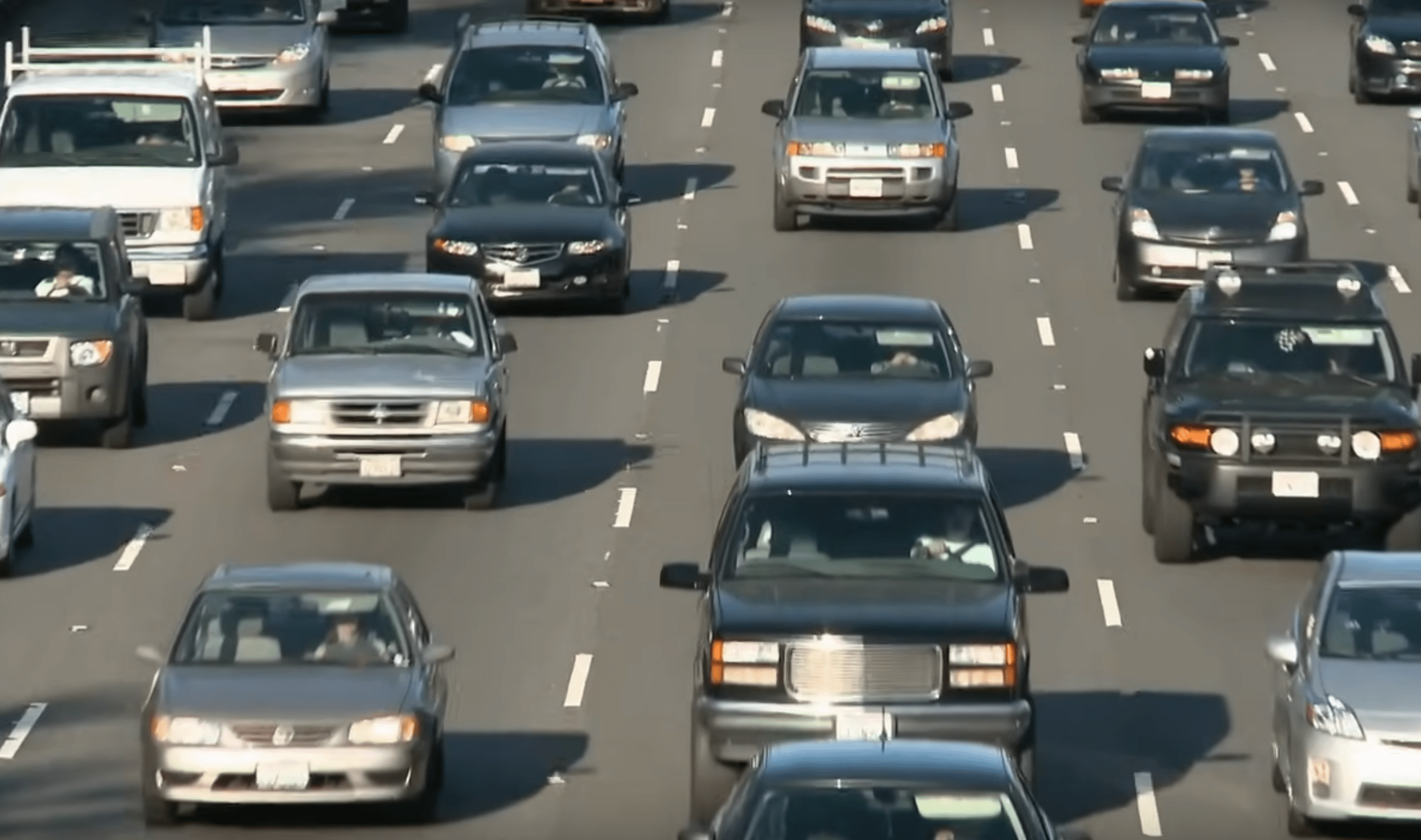O.C. Draft Transit Master Plan Moves through Committee
6:28 PM PST on February 9, 2018
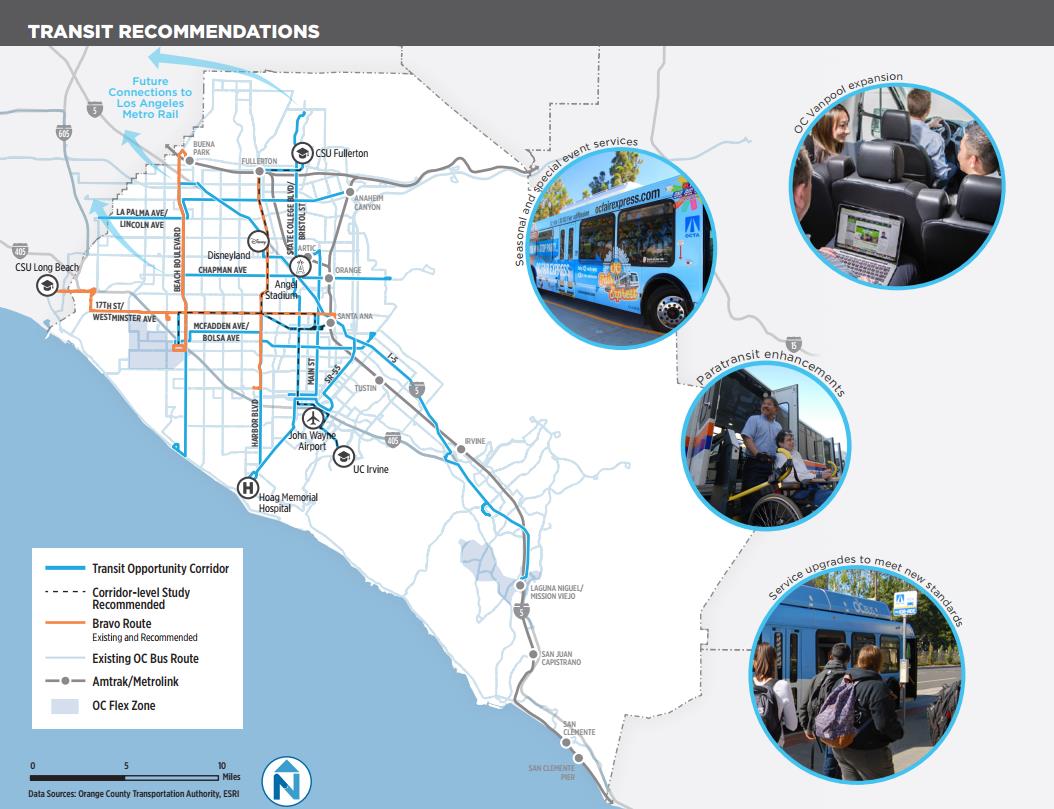
Transit recommendations in OCTA’s Transit Master Plan. The plan proposes improvements to transit based on density. Image: OCTA
Major decisions on Orange County's transit future and key bicycle and pedestrian projects will be decided at Monday's OCTA Board meeting. The Orange County Transit Master Plan, a document that would set the agenda for transit investment for the next twenty years, was passed by OCTA's transit committee Thursday morning, setting it up for a vote on Monday.
OCTA's transit plan, known as OC Transit Vision, presents multiple strategies for bolstering the system, such as upgrading bus technology and adding new programs like on-demand service. But the biggest investments are seen in making the current transit system faster, more reliable, and able to carry more people. Options including streetcar, bus rapid transit, and rapid bus service are being proposed in eleven transit corridors. Off-board fare payment, all-door boarding, and prioritizing transit at traffic signals could also be considered.
The plan appears to pick up where the OC Bus 360 plan left off. While that plan was controversial for cutting bus service, it also bolstered service in heavily used areas. The same appears to be happening with the transit plan, as almost all of the eleven transportation corridors identified in the plan are located in North and Central Orange County. Between Santa Ana (32 percent), Anaheim (18 percent), Garden Grove (7 percent), Orange (6 percent), Fullerton, (5 percent), Costa Mesa (5 percent), and Westminster (5 percent), seven cities account for 75 percent of the county's ridership and the majority of projects proposed in the plan. These areas are also home to the largest concentrations of low-income earners.
The cost to implement the entire plan is forecast to be $2.6 billion, and staff project an increase of 480,000 revenue hours if the plan is fully carried out.
The plan was released in January and is nearing completion. At a meeting this week, the transit committee approved the recommendations in the short-term action plan. With the exception of improvements to local bus service, which is an ongoing effort, projects included in this action plan would be expected to start or be completed in the next two years. Projects in the medium (2023-2032) and long-term (2033+) time frame would be considered in the future through the Long Range Transportation Plan.
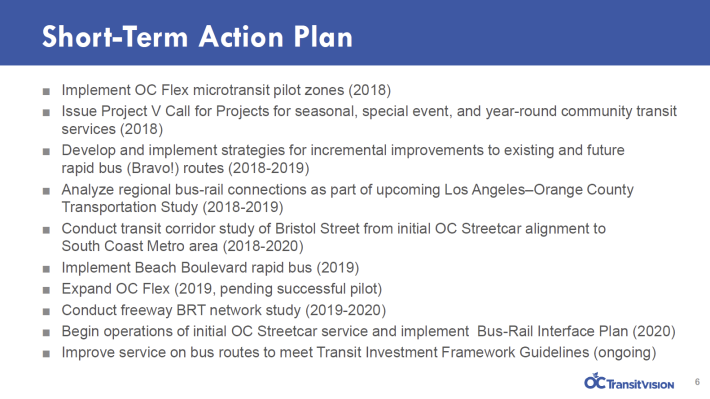
Main Street, for which a rapid bus is proposed, and Seventeenth Street/Westminster Avenue, where either a streetcar or bus rapid transit will be considered, were moved by Supervisor Andrew Do from their proposed midterm time frame to the short-term plan. Central Orange County routes like these two, Do said, are major corridors with high ridership and should be prioritized. "They are the bulk of our transit ridership," Do said.
Other proposed projects include adding more seasonal and special event services, similar to the OC Fair Express and the Angels Express, improving connections to Metrolink stations, rolling out a microtransit on-demand service, enhancing paratransit services, and expanding OC Vanpool.
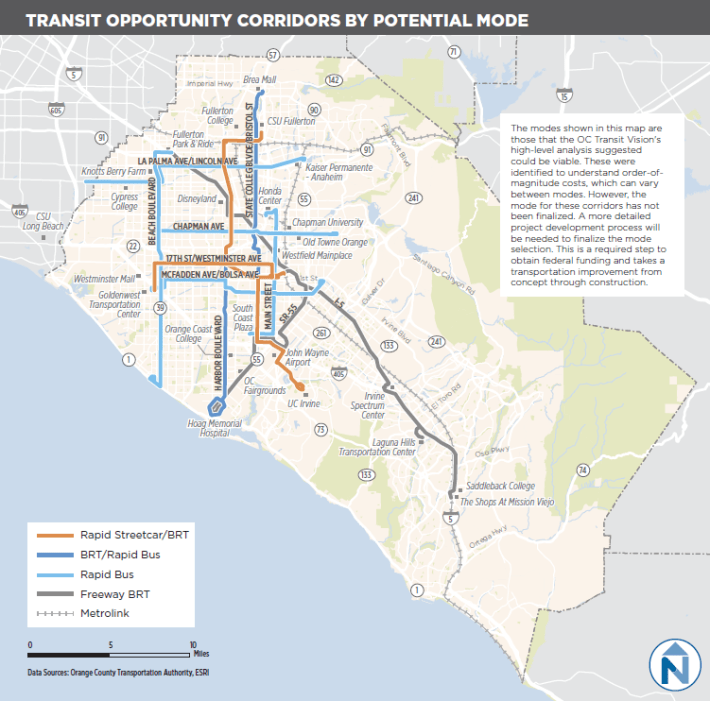
Many of the OC Transit Vision recommendations could be funded at least in part using existing sources. The OC Flex pilot program, an OCTA-managed on-demand service that's been designed to serve low-density areas where fixed-route transit historically has had low ridership, is being funded with existing OCTA funds. Yet, many recommendations, specifically midterm and long-term projects, will need additional state and federal funding and will depend on the outcome of studies done in the next two years, according to the staff report.
The plan was developed over the past year and a half by combining data about current and future population and employment densities, key destinations, demographics, travel patterns, and transit demand. OCTA staff also sought public feedback through multiple online surveys, presentations to citizens advisory committee, elected officials and planning directors, and focus groups.
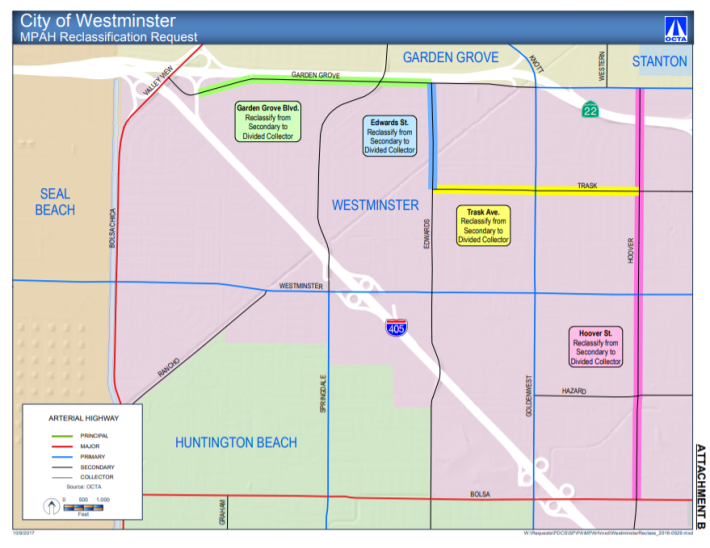
Road Diets, Bike Lanes and Cycletracks in Westminster
On Monday, the regional planning and highways committee recommended that the board approve four amendments to the Master Plan of Arterial Highways that would open up the possibility of reducing general purpose lanes and adding bike lanes and a cycletrack.
The project would add a Class IV cycletrack along Garden Grove Boulevard between Bolsa Chica Road/Valley View Street and Edwards Street, striped bike lanes on Edwards Street between Garden Grove Boulevard and Trask Avenue, Trask Avenue between Edwards Street and Hoover Street, and Hoover Street between Garden Grove Boulevard and Bolsa Avenue.
These roads would also connect to the Hazard Avenue Bikeway project, which would provide a connection east to Santa Ana, Garden Grove. In January, the California Transportation Commission approved $3.5 million in ATP Cycle 3 funds for the Hazard Avenue Bikeway project, covering the total cost of finalizing the design and construction.
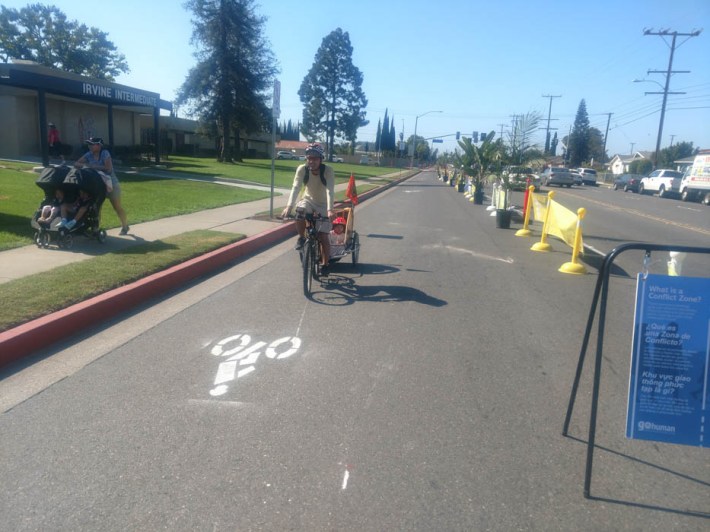
Bicycle Corridor Improvement Program (BCIP) Update
At the same meeting, the committee approved recommendations to cancel four projects from the County of Orange, Dana Point, and San Clemente totaling $5.9 million. The funding for those projects was moved to three others: from County of Orange/OC Parks ($2.1 million), Newport Beach ($2.3 million) and Irvine ($567,000).
The new projects include funding the final design and construction of the one-mile El Cajon Bikeway Gap Closure. The gap, also called Segment H, crosses through Anaheim and Yorba Linda and, once connected, will bridge the El Cajon Trail with the Santa Ana River Trail, with separated bikeways along most of the major streets.
Newport Beach was awarded construction funds to complete a bicycle and pedestrian bridge project; Irvine was awarded funds to complete designs for the Jeffrey Open Space Trail and a bike and pedestrian bridge over the I-5 freeway.
Dana Point's extension of its Coast Highway multi-use bike path had been allocated $2.7 million, but the city requested cancellation of the funding because it lost $360,000 in matching funds for the project. San Clemente, which proposed adding bicycle route signage on its Pacific Coast Highway bicycle route, canceled its project after they found the project was over budget. San Clemente staff hadn't accounted for the cost of organizing and submitting environmental review documents, thus putting the project out of reach of the federal funds. The project had been awarded $143,000 in BCIP funds.
As for the County of Orange, while it technically had its BCIP funding canceled for the Hazard Avenue Bikeway project, it got funding in the ATP Cycle 3 funds, so the project is still alive.
Bike and pedestrian projects are woefully underfunded in the county, but at least the wealth is being spread a bit.
Stay in touch
Sign up for our free newsletter
More from Streetsblog California
The E-Commerce Explosion is Making Roads More Dangerous
And can advanced technology stop the bloodshed?
No, L.A. City Does Not Always Add Required ADA Ramps During Resurfacing, But They Should
StreetsLA GM Keith Mozee "Any time we do street resurfacing, it is considered an alteration, which requires ADA ramps to be installed."
When it Comes to Federal Infrastructure Grants, Size Does Matter
Cities and municipalities with larger budgets and staff are more likely to win competitive federal infrastructure grants, the Urban Institute has found.
Update on Oakland DOT’s Lakeshore Protected Bike Lane Project
Public seems fairly positive and accepting towards the coming project. Let's hope it stays that way
Monday’s Headlines
How much time does driving - and paying for driving - take up? Second best safety fixes are better than none; High-speed rail station plans for Fresno; More




